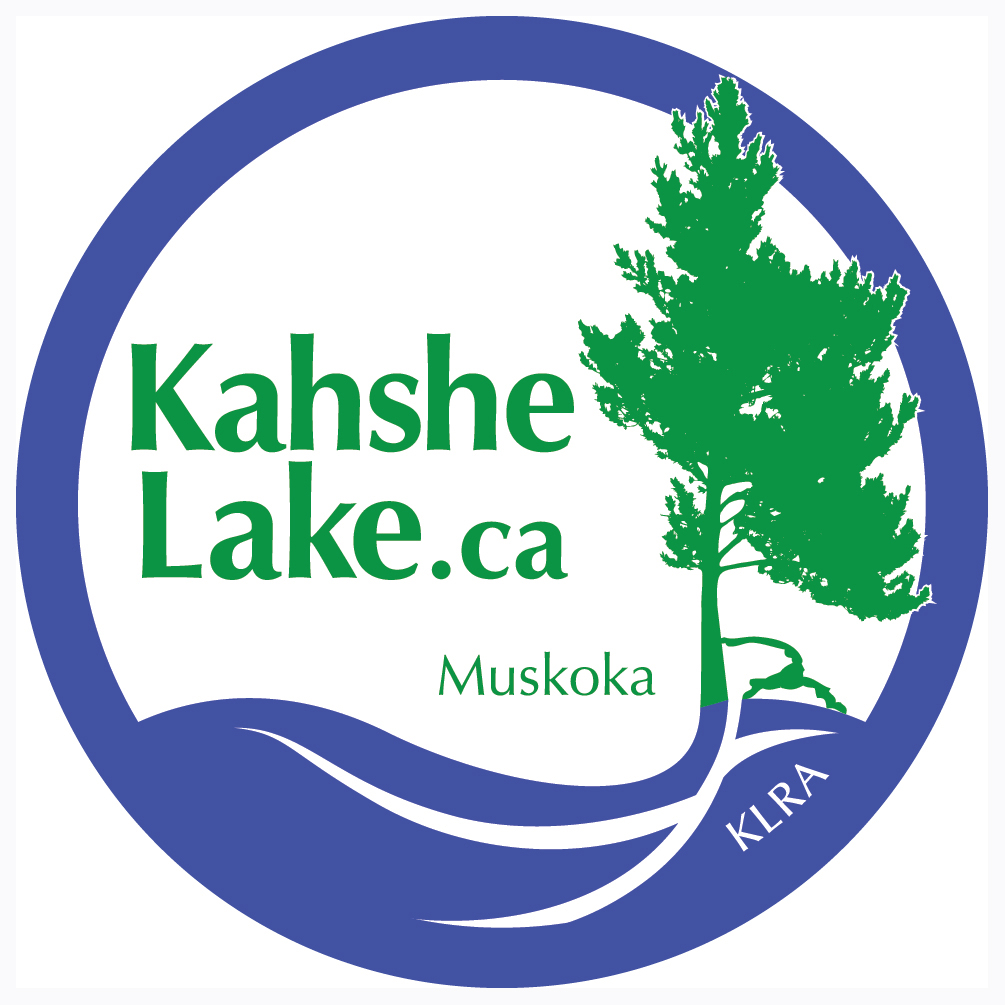
Our Lake Water
by Ron Pearson, Lake Steward updated April 2018
The waters of Kahshe and Bass Lakes have a distinctive brownish colour which makes it difficult to see very far into the depths of the lakes. This is because the lakes are fed through boggy streams and peat-like plant materials - pine needles and oak leaves - which are high in brown-coloured tannins. Kahshe shows its reputation for healing in one of the unsubstantiated names given to it:
Kah-she-she-bog-a-mog meaning Lake of Healing Waters. Just as tea bags are sometimes used for reducing swelling and soothing pain, cuts and burns seem to heal quickly in Kahshe Lake.
Myths aside, as recreational property owners, we are all concerned about the quality of the water. From a development perspective, this is viewed as “lake capacity”. The water is definitely NOT SAFE FOR DRINKING unless it is treated with the appropriate equipment.
However, we are not aware of any issues in terms of recreational swimming and other activities. The water of both Kahshe and Bass Lakes has been tested by your KLRA Lake Stewards and the District Municipality of Muskoka for more than 35 years at several consistent places in each lake. The testing shows phosphorous levels have remained generally well below the threshold concentrations which are based on preserving water quality relative to historical levels.
The measurement of water clarity via use of Secchi disc readings generally supports the findings of the phosphorus analyses. The discs are lowered into the water at the same locations at two week intervals during the spring and summer and measurements are taken to record the depth at which the disc can no longer be seen. Of course, because of the ‘tea’ colour water in our lake, the clarity depth is not as deep as in waters without the ‘tea’ colouring; but that is not a concern as long as the measurements do not change much from year to year.
Benthic testing is also done to study the health of invertebrates and other animal life in sediment from the bottom of the lake near the shore line.
Although phosphorus is a natural product from plants and animals, rising levels in the water also can reflect the effects of shoreline development - from old or inefficient septic systems, excessive use of fertilizers for lawns, soap, dishwashers, clothes washers, etc. As water phosphorus concentrations rise, there is increased potential for algal blooms which can have a devastating impact on property values and the enjoyment of the water for recreational purposes.
Bass Lake, which is shallower, slower moving than Kahshe and with greater wetlands areas surrounding its shores has historically had a higher level of phosphorus over the years compared to Kahshe Lake. However, both lakes are considered to be moderate in sensitivity to increasing levels of phosphorus and neither are considered ‘Over Threshold’, the level at which water quality-related development restrictions may be initiated.
Each of us can do our part to maintain the quality of the water by managing our septic systems properly and by avoiding the use of products containing phosphorus (detergents and cleaners), nitrogen (fertilizers) and toxins (pesticides). We also need to minimize shoreline disturbance to reduce erosion and soil runoff into the water and to minimize the chance of introducing invading aquatic species by taking precautions when boats and related gear are launched into the lake.
----------------------------------------------------------
Shorelines - The
Ribbon of Life
There are a number of measures that we as cottagers can take to protect our shoreline. This ‘littoral’ zone includes the water and the land where they meet along the water’s edge. This area is called the fragile ribbon of life because it is the area of the lake where the fish spawn, water birds nest and food is available for many species.
A) Leaving 30’ of natural vegetation back from the
water. This natural vegetation is achieved by measuring 30’ and doing
nothing. What grows in is “natural”. This vegetation acts as a
filter for runoff which may contain nutrients (good for plants and people but
bad for water quality) from septic beds, fertilizer and compost. Even a
well maintained septic may not filter out all phosphates and nitrates that can
lead to algal growth.
B) If you must have a
lawn beyond the 30’ mark, use native grasses which require no
fertilizer. Fertilizer adds significant quantities of phosphates and
nitrates to your property even if only used once yearly. Leaving the
lawn unmowed will soon allow native grasses and wildflowers to
infiltrate. These are adapted to our environment and require no
fertilizer. You will be delighted by some of the plants that spring up
and bloom - the birds do the landscaping as they fly over and drop seeds.
C) Keep 30’ of shoreline into the water as natural as possible, leaving fallen tree limbs and debris to remain and water plants to grow. Limit the size of your swimming area or beach.
D) Do not change the shoreline by adding rock walls, sand beaches, fixed docks, or using wake-causing boats, all of which destroy the natural shoreline which sustains a large portion of life for fish, birds and mammals. Canada Fisheries and Oceans recommends a 25% gradual slope. A gentle slope cushions the effects of the artificial wave action of passing boats.
|



